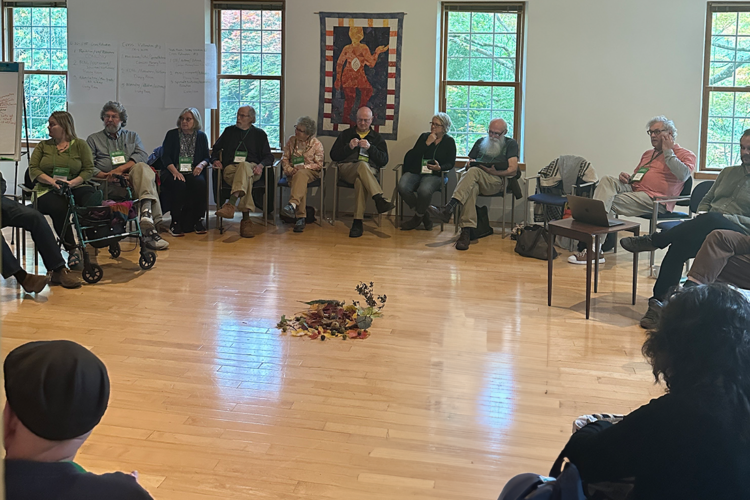Out of the Silos, Into the Mix
By Mary Gilbert, QEW Representative to the UN
TIMETABLE FOR THE SDGS
In March the Open Working Group (OWG) on Sustainable Development Goals (SDGs) completed 12 months of stock-taking in 37 areas of human interaction with our natural environment. As of April, the OWG was left with only 20 days to put together a first draft of recommendations for the SDGs; five days each in April, May, June, and July. This draft must be submitted to the General Assembly (GA) before September 2014, and the final version of the SDGs is to be negotiated and accepted by the GA a year later, in September 2015.
NEXUS VERSUS SILO THINKING
I have been writing for years now about the subtle and total intermeshing of the delicate, elaborate systems that make our world a living entity and enable the lives of all species. All these systems are really one system of overwhelming complexity. We can talk about its various aspects separately for convenience, as we do about our bodies’ circulatory and digestive systems, but Earth’s natural systems are no more separable from the whole than those that keep our bodies going.
Nexus thinking is an effort to get a handle on this complexity. You can’t really grasp a nexus using ever so many cause-and-effect connections because a nexus involves constant, multiple feedback loops in every direction. Many of these are simultaneous, so that what you started with is already changed by interactions as you begin. Some effects are hard to see because they have built-in delays. Other effects are unexpected because they are flat-out counterintuitive.
Nexus thinking is the opposite of the much more common silo thinking that surrounds us and gives rise to the idea that if the only tool you have is a hammer, everything you see looks like a nail. Specialists in water systems may understand dams and sewers but don’t necessarily think in terms of the internal structure needed by healthy soil to hold moisture. City planners may not consider rural needs for thriving local economies and a comprehensive rural-urban system.
It is very hard to think outside the silo of your expertise, where perhaps you have been successful in your field without recognizing its inherent limitations. To participate in nexus thinking you have to leave behind the disciplinary silo of your training and take in the values and principles of other fields that you’ve dismissed as externalities. Even when you have a cognitive grasp of the complexity involved it is very, very difficult to interrupt thinking habits so as to work well with people from other disciplines. Many people are working hard to see that the SDGs will be developed with nexus thinking.
GOALS, TARGETS, AND INDICATORS
The SDGs will include up to 10 goals. Under each goal there will be a cluster of targets, chosen to show progress toward the goals. Each target will be measured by several statistical tools called indicators. Nexus thinking should be evident in both the targets, which can be more inclusive than usual, and the indicators, which can be applicable to several targets. Although the OWG is not tasked with finding indicators, for the five days in May, UN statisticians will be present at OWG sessions to get an idea of what will be needed.
The challenge of getting data that are both useful and comparable among countries is enormous. Some countries don’t even have census data. There is question about who will pay for the training and the data collection and analysis once targets and indicators are determined. Colombia and Guatemala have come up with a Dashboard approach in which there would be a set of internationally agreed overarching goals, but countries would be able to create their own targets. This would set up built-in buy-in by the countries, which would not have had someone else’s priorities forced on them. The idea involves finding a balance between global concerns and internally determined national needs. The following link is to a superbly conceived, easy-to-follow PowerPoint presentation that is too good for me to try to condense. http://www.stakeholderforum.org/ fileadmin/files/DashboardProposalColombiaGuatemala.pdf.
LIFE OUTSIDE THE SILOS
As a genuine non-expert in every field I can think of, I have the advantage of not having to fight my way out of any disciplinary silo. In a way that gives me a head start. However, like the danger of a silo thinker not understanding someone else’s silo thinking, we non-specialists also have a tendency to simplify and discount things we don’t have much information about. It is possible that some of these suggestions incorporate factors I would be glad to have if I did understand them.
I anticipate that the outcome of work on the SDGs will for me be full of personal disappointment, but I can and do hope for some measure of wisdom for humankind in the post-2015 agenda.
PLANETARY BOUNDARIES AND SUSTAINABLE SOURCING
At the end of my articles I usually say, “Here are the facts; discern how you are called.” This time I am making suggestions you might want to act on. Here are two things you can do that will cost nothing:
- Improve the public conversation. Many ordinary folks as well as decision-makers are still averse to talking about “climate change.” I’ve been looking for useful phrases that they might hear better. “Planetary boundaries” and “planetary limits” are not common in the general public conversation and absent in the “financial community.” Let’s inject these phrases into more of our talk.
- Promote better purchasing by local governments. In the U.S., some states and municipalities are way ahead of the federal government in making beneficial changes in how they do things. Find, support, even start a campaign for sustainable sourcing, sometimes called “green procurement,” by your local governments. This can make an enormous difference, both in physical effects and in public education.

